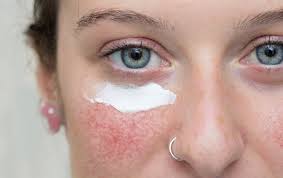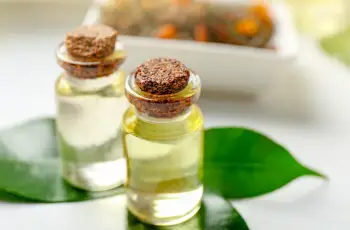
How to Use Azelaic Acid for Rosacea
Azelaic acid is a powerful yet gentle skincare ingredient that can transform how you manage rosacea without overwhelming sensitive skin or triggering flare-ups.
When dealing with a skin condition like rosacea, it’s normal to be cautious about what you apply, fearing irritation or reactions from the wrong product or ingredient.
One of azelaic acid’s most attractive features is its anti-inflammatory properties, which work to reduce redness and calm the skin while offering long-term relief from rosacea symptoms.
It penetrates deep into the skin’s layers, helping prevent future flare-ups and minimizing the appearance of redness, papules, and uneven texture caused by rosacea.
Now, let’s explore how azelaic acid works, how to use it correctly, and how long it may take before you start seeing noticeable improvements in your skin.
What Is Azelaic Acid and How Does It Work for Rosacea?
Azelaic acid is a naturally occurring dicarboxylic acid derived from grains like wheat, rye, and barley, but it’s now synthetically formulated for stability and consistency in skincare products.
Although it’s often mistaken for an AHA (Alpha Hydroxy Acid), azelaic acid offers exfoliating and brightening benefits while remaining far more gentle and better suited for reactive skin.
Its multitasking properties help unclog pores, reduce redness, fight acne-causing bacteria, and lighten hyperpigmentation—all without stripping or irritating sensitive skin types.
Most products contain azelaic acid in concentrations between 10% and 20%, with even lower percentages proving effective for treating rosacea without causing sensitivity.
Choosing the right concentration and formulation is critical for those with rosacea, as overly harsh formulas can worsen redness or lead to flaky, irritated patches.
Benefits of Azelaic Acid for Rosacea-Prone Skin
It soothes the inflammation associated with rosacea and minimizes facial redness over time by targeting the underlying triggers that cause flare-ups.
It gently exfoliates the skin, removing dead cells from the surface to reveal a brighter, more even-toned complexion with fewer visible patches of irritation.
It has antibacterial properties that help prevent acne breakouts, which often accompany rosacea, especially the subtype with pustules and papules.
It reduces post-inflammatory hyperpigmentation (PIH), dark spots, and uneven skin tone caused by long-term irritation, UV exposure, or old blemishes.
It helps clear congested pores without the drying effects of other acne or exfoliating agents, making it suitable even for the most delicate skin types.
Can Azelaic Acid Make Rosacea Worse?
Azelaic acid is generally very well tolerated, but incorrect usage, like applying too much too quickly or choosing the wrong formula, can lead to skin sensitivity or flare-ups.
Some high-percentage formulas may have a gritty or grainy texture, which can physically irritate rosacea-prone skin, especially if it’s already inflamed or compromised.
When first starting out, using a product with a lower concentration—around 10%—can help your skin build tolerance without triggering a negative reaction.
Always perform a patch test before introducing azelaic acid into your routine, especially if you’re prone to reactivity or your rosacea tends to flare easily.
With the right approach and patience, azelaic acid can significantly reduce symptoms rather than worsen them, but consistency and moderation are key.
How Long Does Azelaic Acid Take to Work on Rosacea?
It’s important to set realistic expectations—azelaic acid is not an overnight solution, and you may begin to see visible improvement in 4 to 6 weeks of consistent use.
In some cases, full benefits like reduced redness, fewer bumps, and improved texture can take 8 to 12 weeks, especially if the rosacea is more severe or persistent.
Results may appear faster when azelaic acid is used alongside a complete skincare routine that supports barrier repair, hydration, and sun protection.
Track your skin’s response and take photos weekly to notice subtle changes in tone, inflammation, and overall skin clarity over time.
If irritation or worsening symptoms occur, reduce usage frequency and consult a dermatologist to ensure the formula is suitable for your skin condition.
When and How to Use Azelaic Acid in Your Skincare Routine
Azelaic acid can be found in multiple product types including gels, creams, serums, and even prescription treatments depending on your needs and the severity of rosacea.
Whether using an over-the-counter or prescription version, start by applying a thin layer once a day to clean, dry skin to allow your skin time to adjust.
After a couple of weeks with no irritation, you can increase application to twice daily—morning and evening—for optimal rosacea-fighting results.
If you’re layering products, apply azelaic acid after cleansing and toning but before heavier serums, moisturizers, and facial oils to ensure proper absorption.
Always follow up with a gentle, fragrance-free moisturizer and broad-spectrum SPF 30 or higher during the day, as sun exposure can worsen rosacea symptoms.
What Ingredients Should You Avoid Mixing with Azelaic Acid?
While azelaic acid is relatively stable and gentle, it still requires careful pairing with other actives to avoid overstimulation or conflicting reactions.
Avoid using azelaic acid with physical scrubs, strong peels, or mechanical exfoliants as the added friction can irritate rosacea-prone skin and reduce its natural barrier function.
Be cautious when combining azelaic acid with high-strength AHAs (like glycolic or lactic acid) as this may increase your risk of sensitivity, dryness, or stinging.
Azelaic acid and salicylic acid (BHA) can be used together if applied strategically—for instance, using salicylic acid in a toner and azelaic acid in a serum hours later.
Those with rosacea should avoid using salicylic acid too frequently as it may dry the skin and trigger flare-ups, especially in cooler or drier climates.
Can You Use Azelaic Acid with Vitamin C?
Yes, but apply them at different times of day to minimize potential irritation and maximize the unique benefits of each ingredient in your skincare routine.
Vitamin C serums are best used in the morning for their antioxidant and brightening effects, followed by sunscreen to protect the skin from UV damage.
Azelaic acid works well as a night treatment, calming inflammation and evening out skin tone while supporting recovery during your body’s natural repair process.
Layering vitamin C and azelaic acid too closely may be overwhelming for very sensitive skin, so observe your skin’s response and alternate usage if needed.
When paired properly, this duo can significantly improve skin clarity, reduce redness, and deliver a bright, even glow without unnecessary harshness.
Is Hyaluronic Acid Safe to Use with Azelaic Acid?
Absolutely—hyaluronic acid and azelaic acid are a dream team for anyone with dry, sensitive, or rosacea-prone skin that requires both soothing and hydration.
Hyaluronic acid deeply hydrates the skin and supports its moisture barrier, which makes azelaic acid more tolerable and effective over time.
Using a hyaluronic acid serum before applying azelaic acid can help prep the skin and reduce the chances of tingling, flaking, or dryness.
You can also apply a moisturizer with hyaluronic acid after your azelaic acid treatment to lock in hydration and reinforce a calm, balanced complexion.
This combination is particularly ideal for those experiencing frequent redness, tightness, or dry patches that accompany rosacea.
Can Azelaic Acid Be Used Daily?
Yes, most skin types can tolerate daily application of azelaic acid once acclimated, and many people benefit from using it both in the morning and at night.
If you’re new to azelaic acid, start slow with every-other-day use and gradually increase frequency as your skin builds resilience and tolerance.
Those using prescription-strength azelaic acid (15–20%) may need to stick to once daily use unless directed otherwise by a healthcare provider.
Consistent use is crucial to seeing long-term improvements in rosacea symptoms like redness, sensitivity, and texture irregularities.
As always, consult a dermatologist before adding azelaic acid to your routine—especially if you’re managing a medical skin condition like rosacea.
Final Thoughts: Azelaic Acid and Your Rosacea Routine
Azelaic acid is a well-rounded, science-backed solution that addresses multiple rosacea symptoms without overwhelming delicate, reactive skin.
It’s gentle enough for regular use, effective against redness and bumps, and offers brightening and anti-acne benefits without risking over-exfoliation.
Choosing the right formula, introducing it slowly, and pairing it with calming and hydrating products can make azelaic acid a game-changer for rosacea.
For optimal results, support your skincare with lifestyle adjustments—limit sun exposure, manage stress, avoid spicy foods, and use fragrance-free skincare.
And remember: healthy skin takes time, consistency, and care, so be patient, stay informed, and give your rosacea-prone skin the nurturing it deserves.


